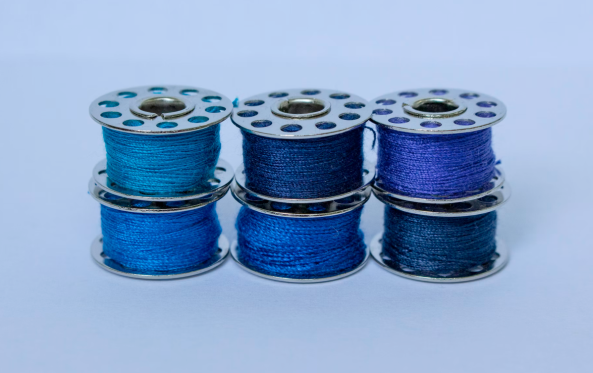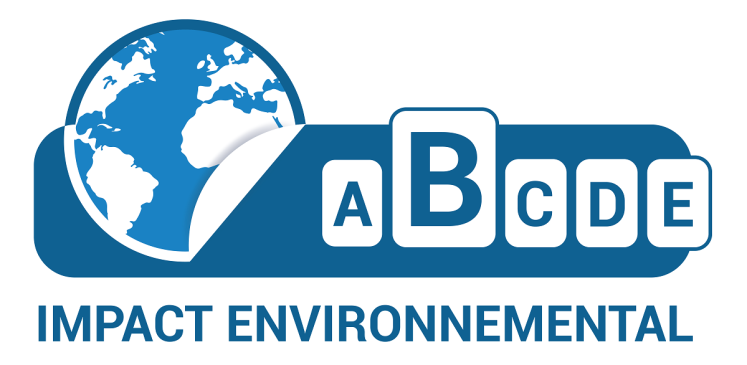
13th edition of Refashion Innovation Challenge
Refashion's Innovation Challenge is back for its 13th edition! Find out more about the call for R&D projects and how to apply!

Refashion's Innovation Challenge is back for its 13th edition! Find out more about the call for R&D projects and how to apply!

Pour la 2ème édition de son appel à projets annuel dédié au réemploi, Refashion soutient 35 projets en France métropolitaine et à La Réunion.|Pour la 2ème édition de son appel à projets annuel dédié au réemploi, Refashion soutient 35 projets en France métropolitaine et à La Réunion.
Afin de s’y retrouver parmi toute ces allégations, être sûr d’utiliser les bons termes pour communiquer sur vos produits et ainsi éviter le « Green Washing » ou écoblanchiment, vous pouvez recourir à plusieurs outils :

The environmental labelling of a product or a service consists in communicating to consumers, on all appropriate supports (the product itself, on shop shelves, on a website...), quantified information relating to its main environmental impacts, calculated throughout its life cycle (its manufacturing, its transport, its use phase and its end-of-life).
Labelling has a dual benefit: firstly, it raises awareness among consumers with respect to responsible consumerism with the help of a grade - A, B, C, D or E - secondly, it encourages brands to put in place sustainable production by encouraging them to improve the environmental performances of their products.
Since 2009, following the Grenelle de l’Environnement, numerous projects (French and European) have been put in place to progressively and massively introduce environmental labelling on textile products and footwear. Companies have already experimented with product labelling with experiments being the focus of reports in order to learn from these pilot stages. To consult the reports compiled in partnership with the ADEME (French Energy Transition Agency):
Projet de pré-déploiement de l’affichage environnemental dans le secteur de l’habillement (Environmental labelling pre-deployment project in the clothing sector)– Decathlon & Affichage Environnemental & Affichage Environnemental Decathlon Développement Durable
Projet de pré-déploiement de l’affichage environnemental dans le secteur de l’habillement (Environmental labelling pre-deployment project in the clothing sector)– Okaidi
Projet de pré-déploiement de l’affichage environnemental dans le secteur de l’habillement (Environmental labelling pre-deployment project in the clothing sector)– Les Tissages de Charlieu

In February 2020, the French Ministry for Ecological and Inclusive Transition launched the French experiment on environmental labelling with a particular focus on textiles and footwear. The objective is that a maximum of brands, suppliers and manufacturers voluntarily take part in this experiment in order to develop an adapted rating base to then enable consumers to compare the environmental performances of products of various brands.
In parallel, a project coordinated by the European Commission aims to develop modelling rules per product category, environmental footprints for clothing and footwear : the PEFCR (Product Environmental Footprint Category Rule) Apparel and Footwear. This project will enable calculation rules to be fixed at a European level for the various environmental impacts per product category. .
For more information on the French experiment or the PEFCR Apparel and Footwear, contact us via the contact sheet at the bottom of the page.

Certain labels certify the environmental and social quality of products according to various criteria such as organic farming, the limitation or prohibition of chemical substances (toxicity) or social criteria such as fair trade for example. Every label corresponds to precise specifications whose requirements must be respected in order to affix the label to the product.
Although labels are distinguishable thanks to their name or logo, it is sometimes difficult to negotiate the "label jungle". Marketers and consumers are often at a loss with respect to labels, which constitutes a significant brake to their appropriation.
Despite this, labelling offers uncontested proof of the supplier's or marketer's commitment and is gaining ground in the choices made by end consumers. Below is a summary setting out some of the label requirement criteria most frequently encountered.
Download the comparative table of labels
Compare with Textile Exchange Preferred Fiber & Materials Matrix and Standards Maps
Sources :
Objectif
Certifie une production de coton raisonnée dans des conditions de travail décentes
Critères d’exigence du label
Critère sociaux, Agriculture raisonnée.
Objectif
Garantit que les cultures de coton ainsi que la fabrication des vêtements respectent l’environnement.
Critères d’exigence du label
Critère sociaux, Agriculture raisonnée et biologique, Production durable, Toxicité.
Objectif
Garantit que le produit est fabriqué dans des conditions de travail décentes et selon un mode de transformation durable.
Critères d’exigence du label
Critère sociaux, Production durable, Toxicité.
Objectif
Assure que les textiles respectent l’environnement tout au long de leur cycle de vie.
Critères d’exigence du label
Critère sociaux, Agriculture raisonnée, Production durable, Toxicité, Composants recyclés.
Objectif
Assure que les TLC* respectent l’environnement tout au long de leur cycle de vie.
Critères d’exigence du label
Critère sociaux, Agriculture raisonnée et biologique, Production durable, Toxicité, Composants recyclés.
Objectif
Certifie que le coton composant le produit est issu du commerce équitable.
Critères d’exigence du label
Critère sociaux, Agriculture raisonnée et biologique, Commerce équitable.
Objectif
Assure que les textiles respectent l’environnement tout au long de leur cycle de vie.
Critères d’exigence du label
Critère sociaux, Agriculture raisonnée et biologique, Production durable, Toxicité.
Objectif
Certifie que le produit est composé de matière recyclée et fabriqué de manière durable.
Critères d’exigence du label
Critère sociaux, Production durable, Toxicité, Composants recyclés
Objectif
Certifie que les textiles ont été testés sur les substances nocives et fabriqué de manière durable.
Critères d’exigence du label
Critère sociaux, Production durable, Toxicité.